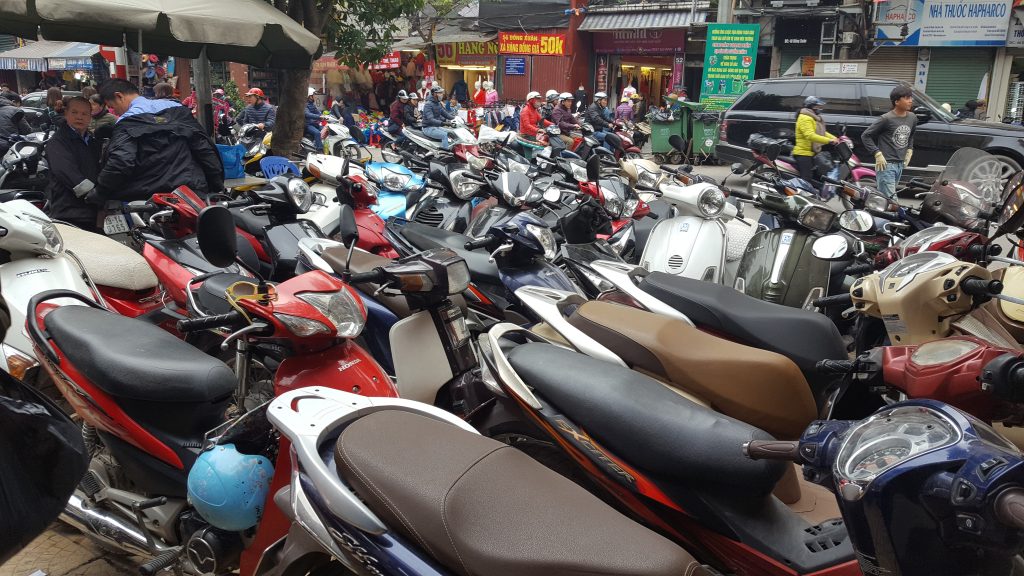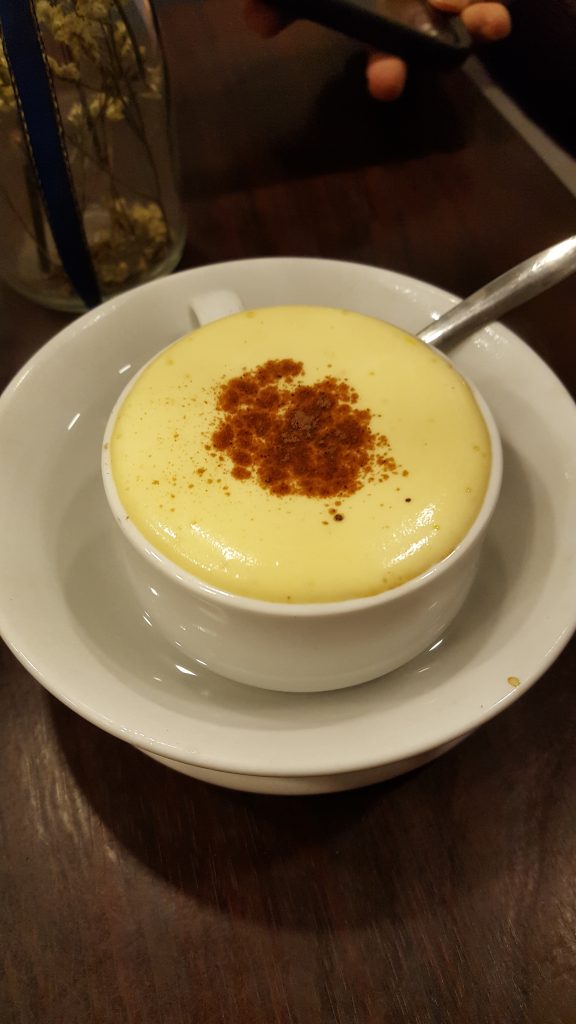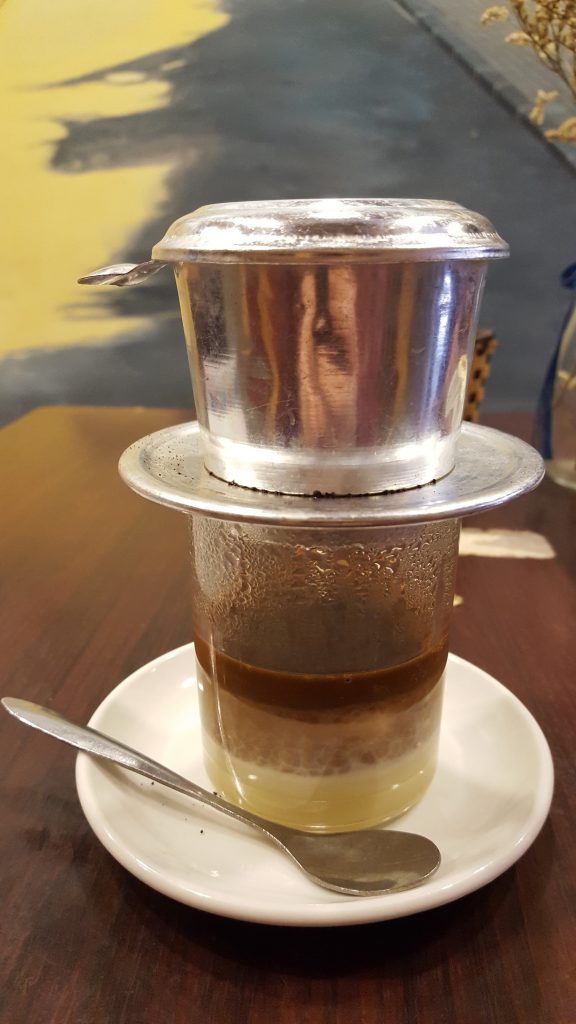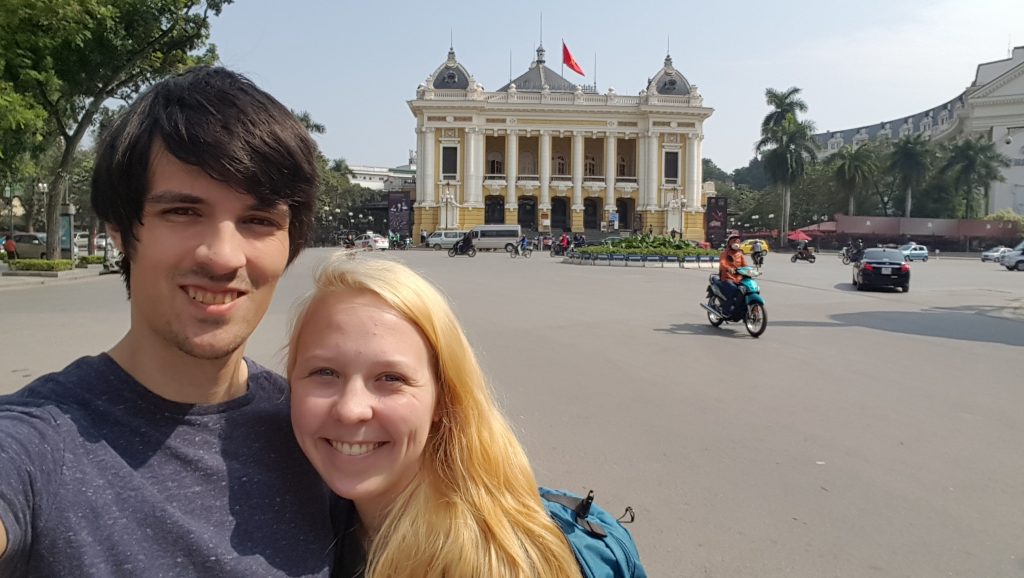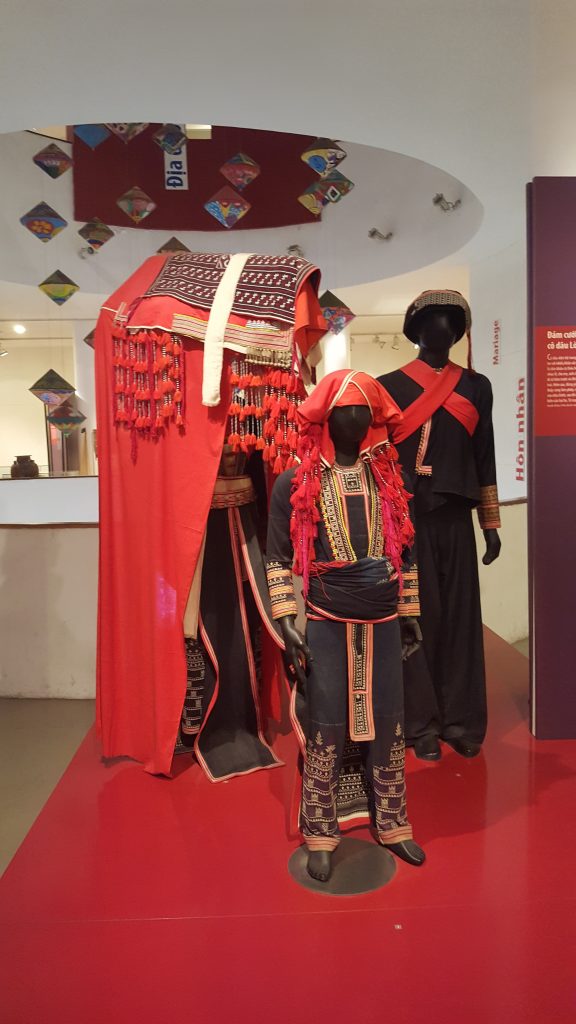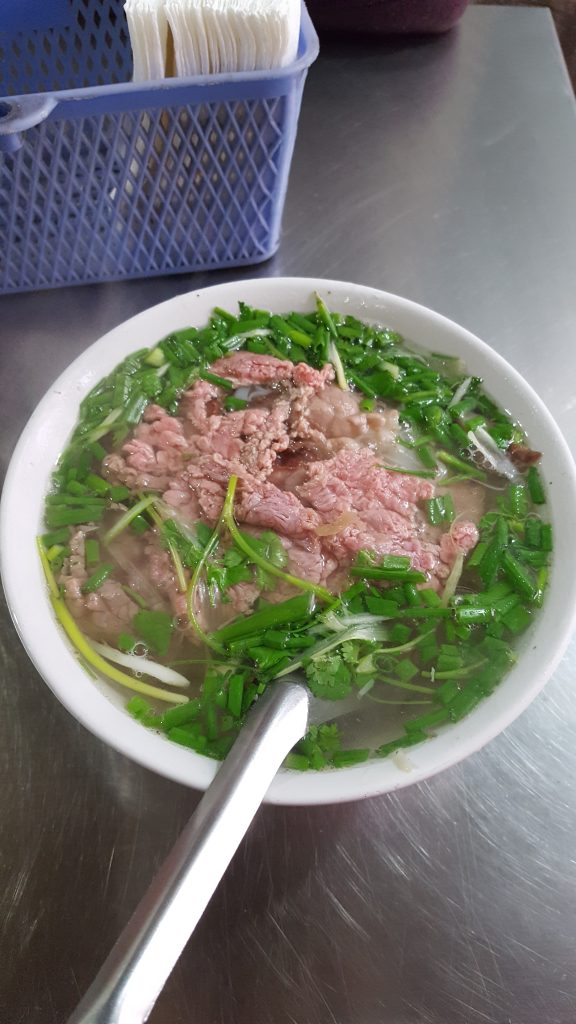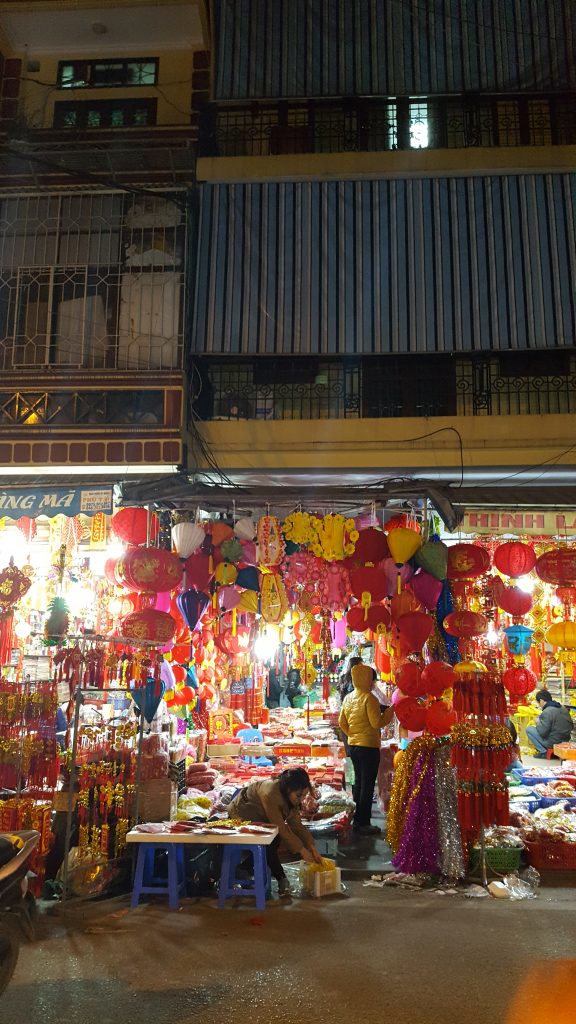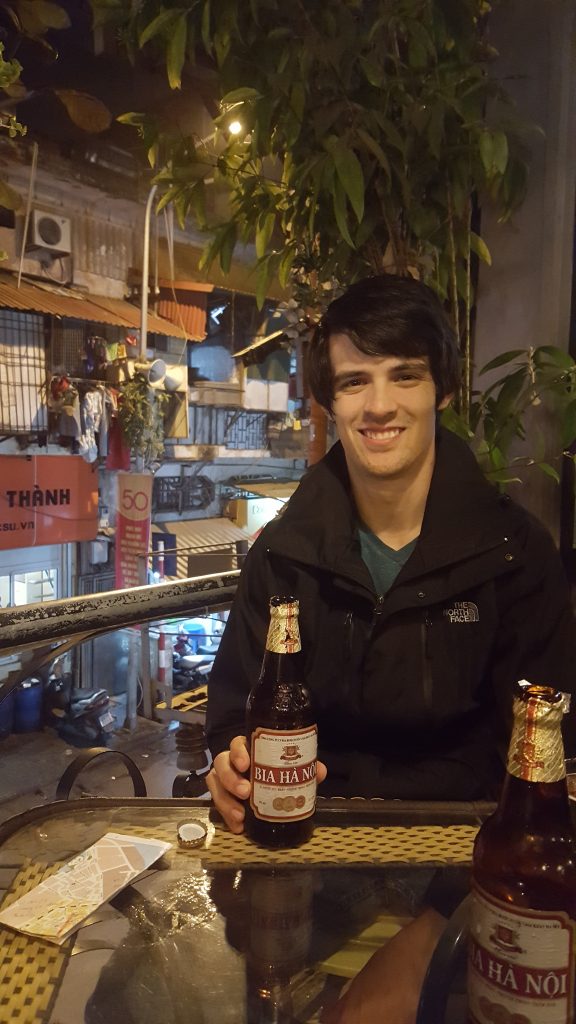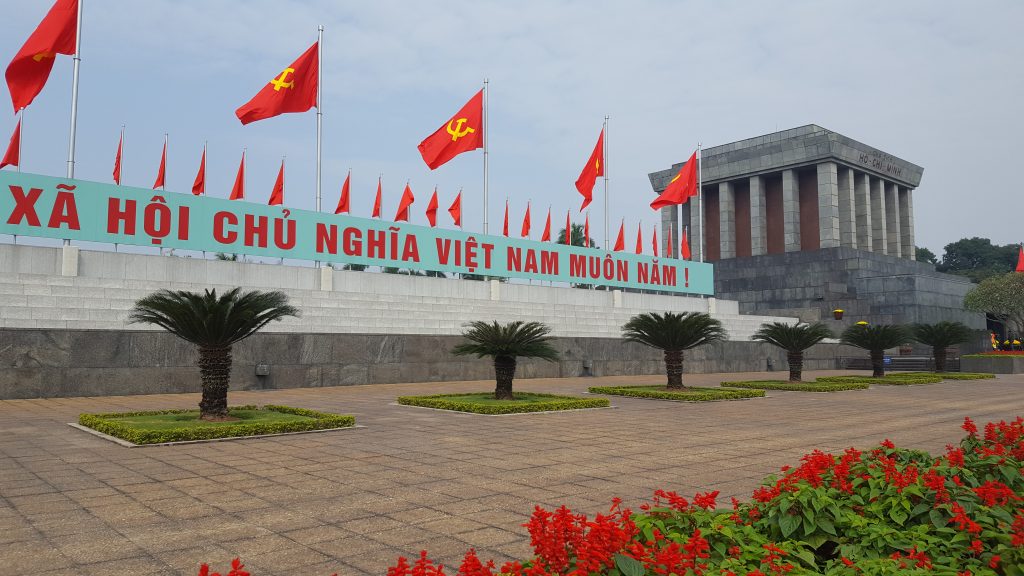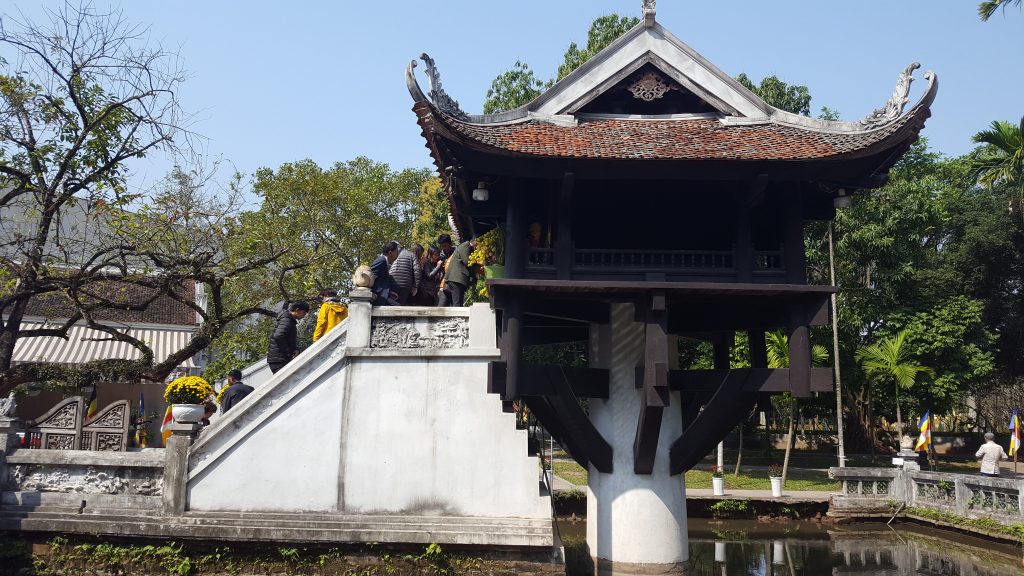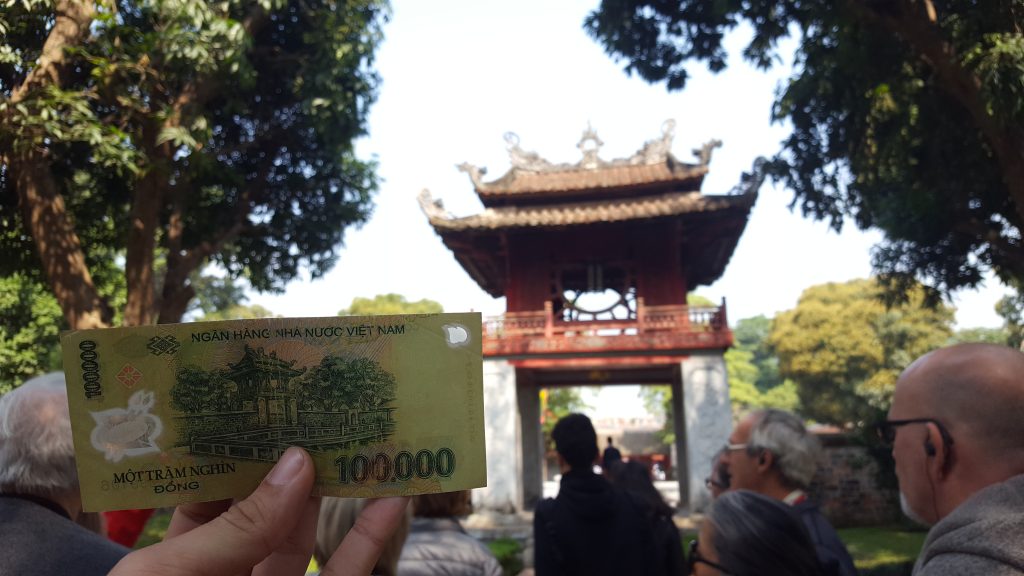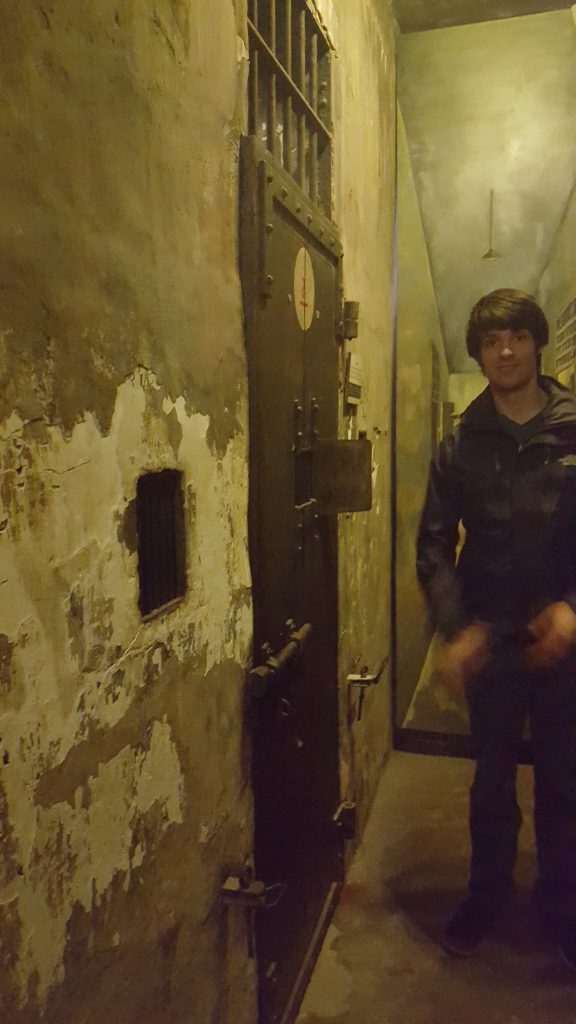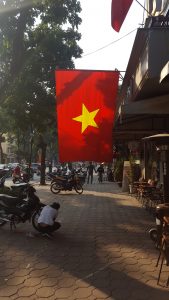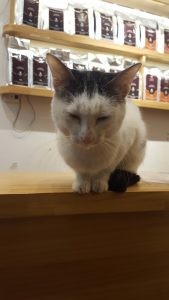After our brief stop in Taiwan, we moved on to country #5 on our month long trip – Vietnam! This marked our entry to Southeast Asia, aka backpacker’s paradise. We instantly understood why so many budget travelers flock to the area. Everything is super cheap, the streets are bustling, and the culture is completely unique.
We had a few days in Hanoi, and we will always remember it for two things: coffee and motorcycles. (Tommy would also add banh mih sandwiches to the list!) They’re everywhere, in every variety imaginable!!! Hanoi was one of the first places we really wandered around, just trying local specialties and absorbing the culture, instead of focusing on the most famous attractions we could visit. Of course, we did check out a few of the main sights as well, but quite honestly our afternoons spent wandering from cafe to cafe were one of our favorite parts of the whole trip. Keep reading to experience this vibrant, crazy city with us!
Culture in Hanoi: Coffee & Motorcycles
The best part about Hanoi was, without a doubt, the coffee. Although you can get a good cup of plain “americano,” they are most known for egg coffee and coconut coffee. Tommy’s favorite was the egg coffee, which he said “tastes how coffee beans smell.” It tasted a bit like tiramisu! We agreed that iced coconut coffee is probably good in hot weather (it’s made up of some kind of icy coconut-flavored substance that is slowly melted by the warm coffee), but wasn’t great for the chilly weather. We tried a hot version with coconut milk that was much better for the season. I also really loved how the Vietnamese use sweetened condensed milk instead of fresh milk or cream, although I’m sure it wouldn’t be great for my waistline if I took up that practice at home!
There isn’t much to say about the motorcycles is except, they’re everywhere and WATCH OUT! We thought the driving in China is a little nutty, but watching these guys whip in and out and around and up on the sidewalk – yikes! Before deciding on China, we had considered Vietnam, and after watching the hectic pace of the streets I was kind of glad we’d started somewhere a bit tamer. We were staying in the Old Quarter, which is one of the most popular areas and has very narrow streets, so maybe the traffic is better in the rest of the city.
Attractions in the Old Quarter
As I said, we did take the time to see the main attractions. The most famous of these is water puppet theater. A band and singers perform on raised platforms to the side, while in the center stage puppets playfully dance and act out their stories on water. The puppets are controlled by people sitting in the water behind a curtain.
Vietnamese water puppet theater is described as “world famous” and a “must-do,” but we came away wondering if it truly is a cultural treasure or just a bizarre tourist trap. Maybe we would’ve appreciated it more if we understood the stories, which were performed in Vietnamese, but either way we were glad it wasn’t longer than an hour.
A lesser known, and likely more authentic, attraction of the Old Quarter is the Vietnamese Women’s Museum. Over several floors, it details aspects of female culture such as marriage, the family, work life, involvement in war, and religion through artifacts and informative displays. I really enjoyed seeing traditional ethnic clothing, and it was fascinating to read about women’s role in the Vietnam war. There were many women listed as leaders and heroes for capturing or killing Americans. It was grim (as all war-related subject matter tends to be), but interesting to consider the war from the home country’s perspective. I’d be curious to see if war museums in the South would have a different take, or if it the public descriptions are uniform.
The Old Quarter is also has some really interesting historical architecture. Because of Vietnam’s history of French colonialism, they have some very European-style buildings. Two of the most famous of these are St. Joseph’s Cathedral and the Hanoi Opera House, both of which we briefly stopped outside but didn’t see the interiors.
In the Old Quarter, we also tried banh mi sandwiches (Tommy misses these quite a bit!), pho, and local beer. We made friends with a few middle age and retired couples who told us all about their travels and shared their life experiences. We checked out the shops and haggled our way to two $15 North Face knock-offs. It just so happened that we were there shortly before the Lunar New Year, so the night markets were extra exciting with crazy decorations for sale. It was great being in the heart of all the action!
Hanoi Free Walking Tours
We also took advantage of a great organization in Hanoi, Hanoi Free Walking Tours, which gives Vietnamese students the opportunity to practice English by showing tourists around the city. We visited Ho Chi Minh Complex and the Temple of Literature in the morning and Hoa Lo Prison in the afternoon. The students were great guides and we definitely learned more about the sites and Vietnamese culture than we would have on our own!
First up was the Ho Chi Minh Mausoleum! Poor Tommy did not know that Ho’s actual body is on display, so he was in for quite a shock. When the beloved Vietnamese leader died in 1969, the government decided that he should be preserved so that all the citizens who had not yet met him could do so posthumously. (The line to view the body was incredibly long, so perhaps they were right!) This actually went against Uncle Ho’s wishes – he wanted to be cremated and have his ashes spread in 3 different parts of the country that were important in his life. Our guides also shared that the mausoleum was meant as a sign of respect for and partnership with the Soviet Union. Vladimir Lenin is also preserved and visible during visiting hours in a mausoleum in Moscow, so Ho Chi Minh’s interment was a direct nod to the Soviet government. It was super bizarre to see a 49 year old corpse, but whoever is in charge of preserving it is doing an incredible job!
Near the mausoleum, we saw various buildings that Ho Chi Minh used during his governance. He rarely used the Presidential Palace, which was built during French rule, except for important state functions. Instead, he lived in a simple house (not pictured, it was literally so basic I didn’t take any photos). He understood the suffering of Vietnamese citizens and did not want to live in luxury while they struggled. Later, he lived intermittently in a modest, traditional stilt house. The stilt house was very simple – only two rooms, no bathroom – but the clean design and woodwork was really beautiful.
After this, we briefly visited the One Pillar Pagoda and moved on to the Temple of Literature. This is a 900+ year old university that was dedicated to Confucius and is well-known for its traditional Vietnamese architecture. Thanks to our guides, we learned about a lot of the structures’ symbolic imagery and the stories behind them. It was pretty, but to be honest we were lagging a bit by this point and it didn’t totally wow us. Still worth a quick visit, though!
We took a quick banh mi and coffee break before heading off on part 2. We had intended to go to the Military History Museum first, but it was closed so our guide took showed us a bit more of the Old Quarter, taking us through narrow alleys used by the locals, visiting a temple, and touring a traditional house. I didn’t take many photos, but we enjoyed learning more about Vietnamese culture! We then walked to Hoa Lo Prison, aka the “Hanoi Hilton.”
The prison was originally used by the French, who kept the Vietnamese prisoners in absolutely awful conditions. It was chilling to see photos from that time and walk through the rooms where the horrible mistreatment took place. Floors were slanted slightly so that when the prisoners lay down (chained by the ankles to the floor), the blood would rush to their heads. Ladders were placed across their shoulders with their heads through the steps, the weight bearing down on them for hours. There was even a huge guillotine that was taken out to the town square to behead prisoners in public.
Apparently, when the Vietnamese used it in later years to hold American POWs, they treated the prisoners much better. In fact, it became known as the “Hanoi Hilton” because the conditions were so nice. The prison had a lot of displays dedicated to this, but I definitely left feeling the need to do some fact-checking! We did get to see John McCain’s uniform from when he was captured before being imprisoned there, which was quite interesting. Overall the prison was very somber and it was sad to think of the conditions in which some people have been treated, but we were glad we visited this historical site.
I suppose that’s a bit of a depressing note to end things on, so focus on the photo of a cat we found in a coffee shop instead! Tommy and I highly recommend visiting Hanoi, if only for the delicious coffee and sandwiches. 😉 But also the culture! Next up on the blog, central Vietnam and the best bus ride of our lives!

